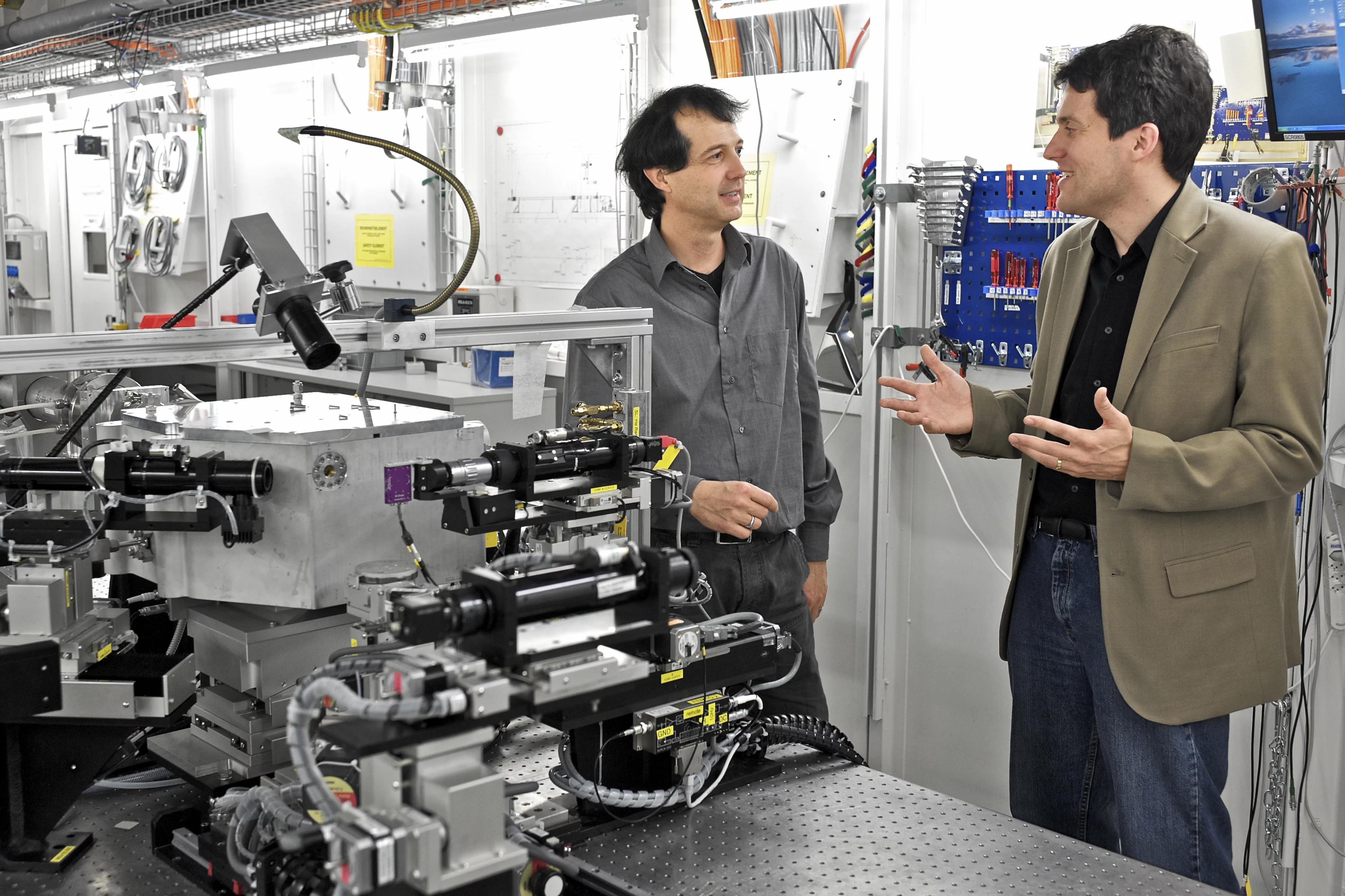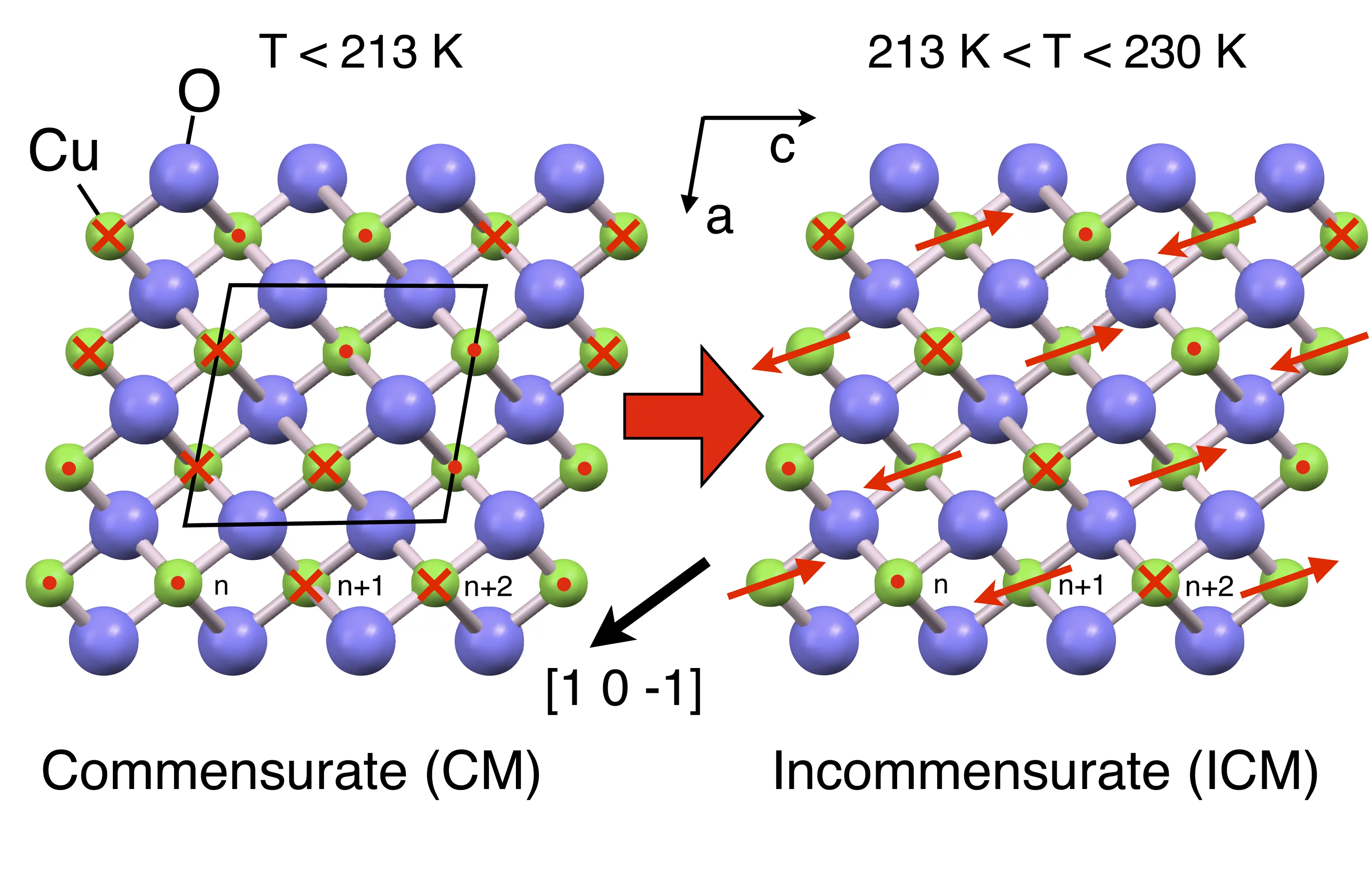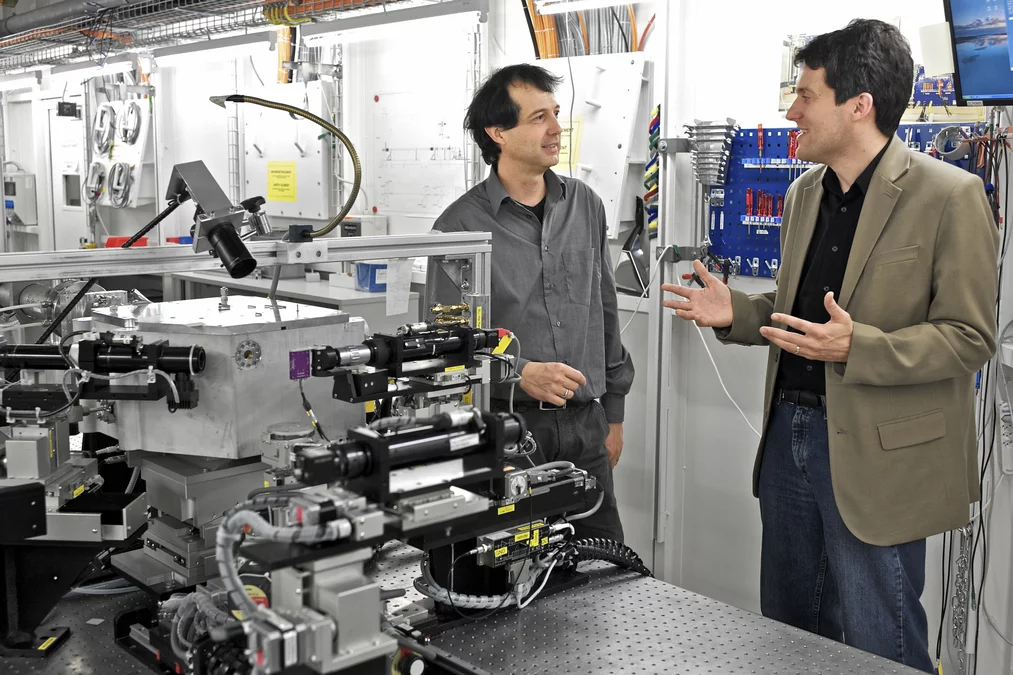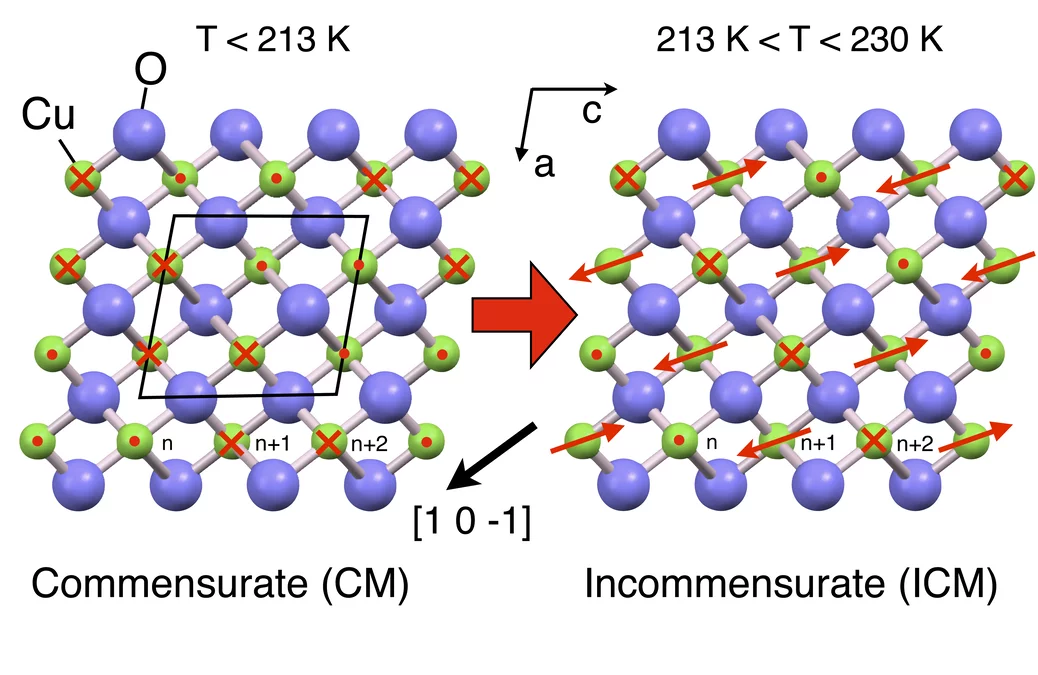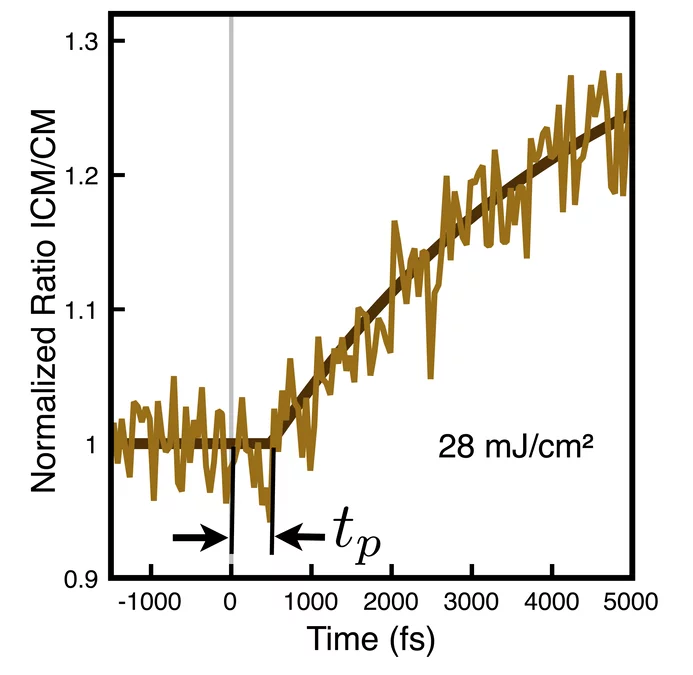In first-of-their-kind experiments performed at the American X-ray laser LCLS, a collaboration led by researchers from the Paul Scherrer Institute has been able to precisely follow how the magnetic structure of a material changes. The study was carried out on cupric oxide (CuO). The change of structure was initiated by a laser pulse, and then, with the help of short X-ray pulses, near-instantaneous images were obtained at different points in time for individual intermediate steps during the process. It appears as if the structure begins to change 400 femtoseconds after the laser pulse strikes (1 femtosecond = 0.000 000 000 000 001 seconds). Apparently, the fundamental magnets within the material need that much time to communicate with each other and then react. In addition to this scientific result, the work proves that it is actually possible with X-ray lasers to follow certain types of extremely rapid magnetic processes. This is another milestone, because such investigations will also be a major focus of research at the planned Swiss X-ray Laser, SwissFEL, at PSI. The results could contribute to the development of new technologies for magnetic storage media for the future. The researchers have reported on their work in the latest edition of the technical journal Physical Review Letters (PRL).
Materials with particular magnetic properties are the basis of many current technologies, in particular, data storage on hard discs and in other media. For this, the magnetic orientation in the material is most often used: the atoms in the material behave to some extent like tiny rod magnets (spins
). These mini-magnets can be oriented in different ways and information can be stored through their orientation. For efficient data storage, it is crucial that old data can be rapidly overwritten. This is possible if the magnetic orientation in a material can be altered in a very short time. To develop innovative materials which can store data quickly, it is therefore important to understand exactly how this change occurs as a function of time.
Magnetic orientation in motion
In experiments performed at the X-ray laser LCLS at Stanford, California, a collaboration led by researchers from the Paul Scherrer Institute have been able to study the magnetic orientation in cupric oxide, CuO. This material demonstrates completely different magnetic orientations depending on temperature: Below -60°C, the spins, which function in the copper atoms (Cu) like magnets, point periodically in one direction and then the opposite; between -60°C and -43°C, they are arranged helically, as if they were forming a spiral staircase. Although the spin orientations for the two arrangements have been known for some time, the time required to move from one arrangement to the other has only now been shown by the experiment.
In our investigation, we began with a
, explains Steven Johnson, spokesman for the PSI experiment. “Shortly after this, we determined the structure of the sample by illuminating it with an extremely short pulse from an X-ray laser. When we repeated this at different time intervals between the flash of light and the X-ray pulse, we were able to reconstruct the course of the change in the magnetic structure.cold
sample and then heated it with an intense flash of light from an optical laser
Mini-magnets need 400 femtoseconds to agree amongst themselves.
The results show that it takes about 400 femtoseconds before the magnetic structure begins to alter visibly. Then the structure gradually reaches its final state. The more intense the initiating flash of light, the faster the change of state. The spins of all copper atoms are involved in the magnetic structure. Thus the atoms at opposite ends of the material must be coordinated before the structure can change. This takes 400 femtoseconds
, explains Urs Staub, one of the PSI researchers responsible. For cupric oxide, that is the fundamental limit; it simply cannot happen faster than that. This depends upon how strongly the spins are coupled between neighbouring atoms.
There is a good reason why the researchers were particularly interested in cupric oxide. Along with the screw-like magnetic orientation that occurs between -60°C and -43°C, the material is also multiferroic
, a material where electrical and magnetic processes mutually influence one another. These materials have many different potential areas of application where magnetism and electronics interact.
Important step for SwissFEL
The LCLS facility went into operation in 2009 as the first X-ray free-electron laser in the world, and the PSI researchers were amongst the first to perform experiments at it. The extremely short pulses of only a few femtoseconds that it produces make it possible to follow the course of very rapid changes in materials, of which only the initial and final states have until now been known. The experiment on cupric oxide demonstrated that X-ray lasers can truly fulfil these expectations in studies on magnetic materials. Such investigations will also be a major focus of research at SwissFEL, the X-ray laser which is planned for PSI and which will begin operation in the year 2016, in the close vicinity of the existing PSI site.
About PSI
The Paul Scherrer Institute develops, builds and operates large, complex research facilities, and makes them available to the national and international research community. The Institute's own key research priorities are in the investigation of matter and material, energy and the environment; and human health. PSI is Switzerland's largest research institution, with 1400 members of staff and an annual budget of approximately 300 million CHF.
Contact
Dr. Urs StaubLaboratory for Condensed Matter; Department of Synchrotron Radiation and Nanotechnology, Paul Scherrer Institute, 5232 Villigen PSI, Switzerland
Tel: +41 56 310 4494, E-Mail: urs.staub@psi.ch
Prof. Dr. Steven Johnson (who performed the work outlined here while still working as a scientist at the Paul Scherrer Institute)
ETH Zurich, Institute for Quantum Electronics, HPT D 15, Wolfgang-Pauli-Strasse 16, 8093 Zurich;
Tel: +41(0)44 633 76 31, E-Mail: johnson@phys.ethz.ch
Original Publication
Femtosecond Dynamics of the Collinear-to-Spiral Antiferromagnetic Phase Transition in CuOS. L. Johnson, R. A. de Souza, U. Staub et al.
Phys. Rev. Lett. 108, 037203 (2012); DOI: 10.1103/PhysRevLett.108.037203
Further Information
- The SwissFEL – a popular introduction
- Webpage of the SwissFEL project
- The LCLS x-ray laser in California

